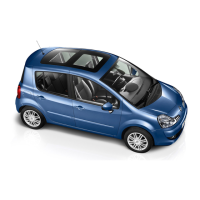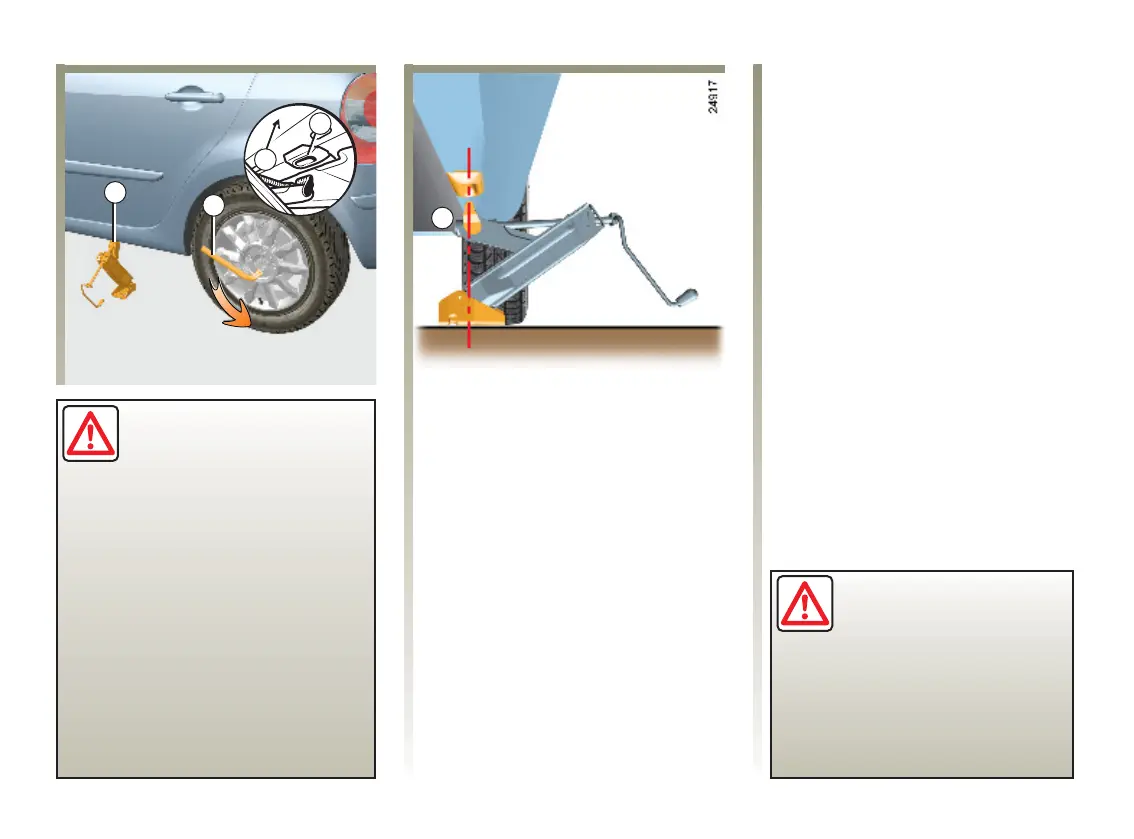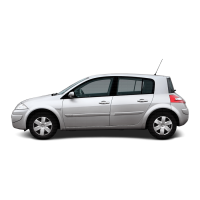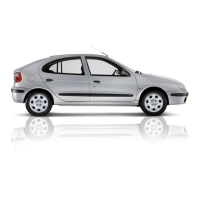1
4
3
2
A
NU710_6_G5-FRA 9/03/05 17:18 Page 5.07
J77 - NU710-5
C:\Documentum\Checkout\NU710_6_T5-ENG.win 6/4/2005 11:23
-page7
5.07
CHANGING A WHEEL
Park the vehicle on firm,
level ground which is not
slippery (avoid tiled floors,
etc.) (if necessary, placing a
plank under the jack). Switch on
the hazard warning lights.
Apply the handbrake and engage a
gear (first or reverse, or P for
automatic gearboxes).
Ask all the passengers to leave the
vehicle and keep away from the
traffic.
If necessary, remove the wheel trim.
Loosen the wheel bolts using
wheelbrace 4. Fit it so that you press
downwards rather than pulling
upwards.
Crank up jack 1 by hand to position
the jack head against jacking point 2
closest to the wheel concerned and,
depending on the vehicle, marked
by an arrow 3.
Continue to crank the jack so that
the baseplate is correctly positioned
(it should be underneath the vehicle
andalignedwithjackheadA).
Turn a few times to lift the wheel off
the ground.
Undo the bolts and take the wheel
off.
Position the emergency spare wheel
on the hub and turn it so that the
holes in the wheel and the hub are
aligned.
If bolts are supplied with the
emergency spare wheel, only use
these bolts for the emergency spare
wheel. Tighten the bolts and lower
the jack.
With the wheel on the ground, fully
tighten the bolts and check they are
correctly tightened as quickly
as possible (tightening torque
110 Nm).
If you have a puncture,
replace the wheel as soon
as possible.
A tyre which has been
punctured should always be
inspected (and repaired if
possible) by a specialist.

